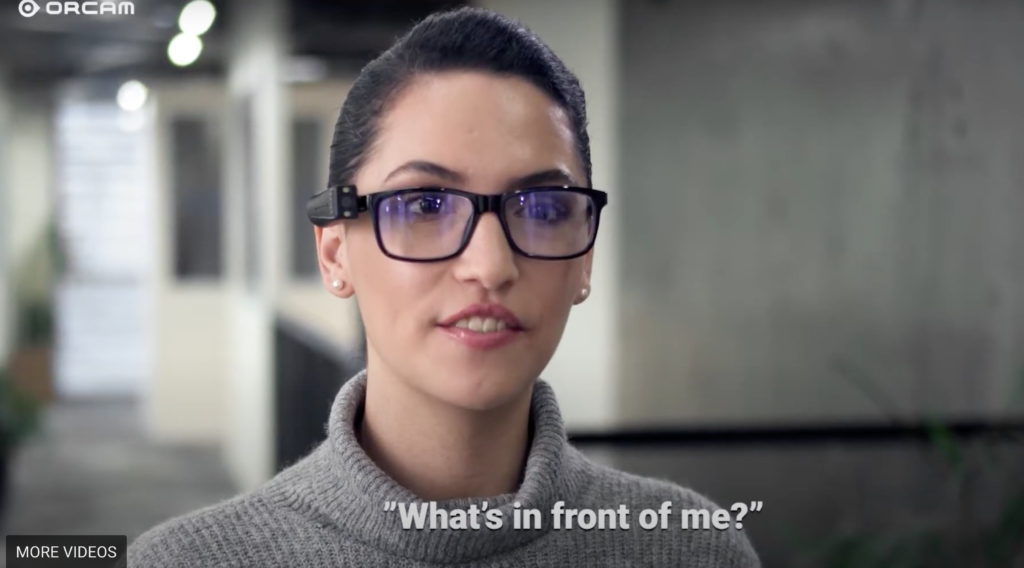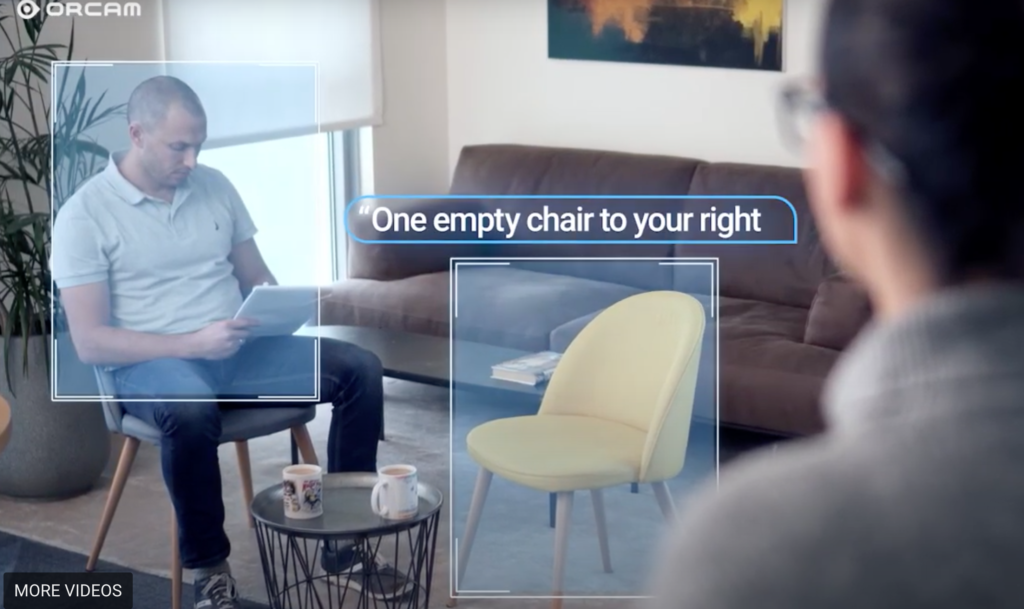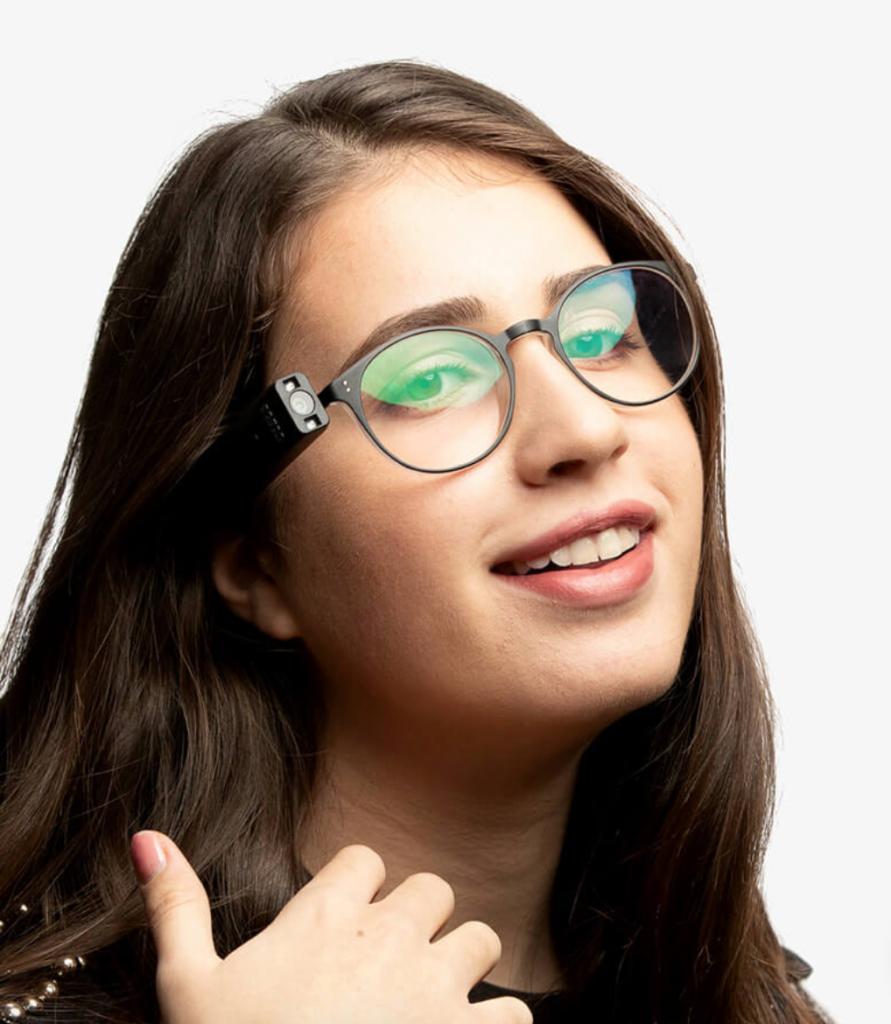OrCam MyEye 2 is an assistive technology device designed for people with reading difficulties, visual impairments, or blindness. The device is small, portable, and can be attached to any pair of glasses. The design of the device is appealing and because of its small size, it increases the desirability of the product. This device attaches to glasses magnetically allowing users to easily swap frames or take the device off if they only want to use it on specific occasions.
The OrCam MyEye 2 has plenty of great features including the Orientation Feature, giving the user the ability to snap images of their surroundings. The device can then communicate to the user what is around them via a small speaker located on the end closer to their ear. The device can identify if there are doors, chairs, and other objects including people, sitting, or standing. The device is user friendly and can be controlled by a pointing gesture or by voice commands.


The Facial Recognition feature is one that works closely with the previous feature. The OrCam MyEye 2 can recognize the faces of the people around the user and name them out loud which can be helpful not only for individuals with a visual impairment but for anyone who suffers from prosopagnosia a neurological condition that makes it difficult to identify faces or any condition similar to it. The facial recognition feature makes this device accessible to a new group of users that the product might not have initially been intended for and it is actually not mentioned in the product website at all.
The Smart Reading feature increases the desirability and usability of the product. Many assistive technology devices for people with visual impairments, or difficulties reading are meant to read or voice over each word on a page. The Orcam MyEye 2 has the ability to do this, but a little differently. Not only will the OrCam read to the user the text of their choice with a point of a finger, but it will also give them the option to read headlines only, page headings, titles, and then allows them to select which article or section of the page they would like the device to read aloud. This is useful not only for reading textbooks, newspapers, and so on, but menus at a restaurant, or the labels on the back of a container with food.

At first, I found it difficult to identify whether the Orcam MyEye 2 fell under the medical model or the social model, but my conclusion is it falls under the medical model. The Orcam website defines that their product “improves the lives of individuals who are blind, visually impaired, or have reading difficulties” and “it helps you live a more independent life”. This means the device is targeting an audience living with a medically diagnosed condition that more likely falls under a permanent disability as opposed to people who might have a temporary or situational disability. The phrase “more independent life” tells me that the device is designed to “fix” the individual user and not the world around them.
Unfortunately, this device comes with a price tag of around $4,500 making it a device that is not very affordable and decreasing the accessibility. Users who aren’t able to afford the Orcom MyEye 2 find themselves using cheaper products that might be less effective and might not increase independent living or participation like this device might.
